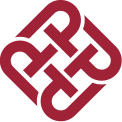



For hundreds of years until the 1900s, Sinitic or written Chinese was commonly used as a vibrant scripta franca or written mode of interactional communication in sinographic East Asia, which covers today’s China, Japan, the Koreas and Vietnam. As an interactive mode of cross-border communication, writing in non-alphabetic Chinese characters—sinograms—was widely perceived by East Asian literati of Chinese as a viable substitute for speech, which was rarely possible given that bilingualism was uncommon. The most frequently used writing instruments were brush, ink and paper, hence Sinitic brushtalk漢文筆談. Sinitic brushtalking as a written mode of cross-border communication would not have been possible without the spread of Chinese literacy beyond the Middle Kingdom. For hundreds of years, Chinese books from literary classics and philosophical treatises to practical references like herbal medicine and primers of character writing were eagerly sought and imported by China’s East Asian neighbours. Despite the logographic nature of the script, the learning of classical and literary Chinese texts by those who had the resources and time to do so allowed some to develop Chinese literacy up to a fairly high level. These sociolinguistic conditions and literacy traditions, practiced on a fairly large scale country-wide, made it possible for literati of Chinese in different parts of sinographic East Asia to perform ‘silent conversation’, interactively face-to-face in their cross-border communication.
During late 19th century, being wanted by the Ch’ing government, a number of élites and revolutionists fled overseas, where Japan is one of the preferred place due to its geographical proximity to China. Due to a lack of shared vernacular between these élites and the local Japanese literati, a number of brushtalk records were improvised for face-to-face communication purpose although only a small part of these documents survives today. In August 1897, Sun Yat-sen settled in Yokohama. Not being a conversant of Japanese, he could only communicate with Japanese by brushtalk, for example, Miyazaki Touten, who is an important comrade supporting Sun’s revolution. During their two encounters at Miyazaki’s residence, they could converse in English but chose to ‘speak their mind’ through brush/pencil conversation. For several days they were seated side by side, exchanging views regarding effective strategies and tactics for supporting the Chinese revolution and Asian countries’ struggle against European powers’ invasion and hegemony.
Nevertheless, only some original manuscripts of these brushtalk documents were carefully kept and inherited until today, which form an essential part of Miyazaki Touten’s family collection. This surviving database is all the more valuable given that, to avoid political persecution, most of the 500 artefacts of their brushtalk interactions had to be destroyed (Chén & Zhū 2016). Recently, photocopy of the 39 surviving manuscripts was published in China, which provides a primary source for the study of China’s pre-modern history.
We have built our corpus by using the brushtalk manuscripts as collated in 《宮崎滔天家藏:來自日本的中國革命文獻》
(‘Miyazaki Touten’s Family Collection: Documents on Chinese October Revolution from Japan’), which was
published by the Research Centre of the China Soong Ching Ling Foundation in 2011, as a foundation. It is a
high-quality data source consisting of a total of 39 well-preserved brushtalk manuscripts dated the last
decade of the 19th century, colour-printed and fully transcribed, complete with annotations and commentaries
between Dr Sun Yat-sen, Miyazaki Touten 宮崎滔天, Hé Shùlíng 何樹齡, Munakata Kotarou 宗方小太郎, Hirayama Shu
平山周 (Wáng & Chén 2020). There are several advantages for selecting this data source for fine-grained
analysis:
thematically focused (Republican revolution and nation-building);
topically tight-knit and coherent (topics recurring in several brushtalk sessions);
conversationally goal-directed (questions and responses consist of requests for information or viewpoints);
concise and manageable (circa 7000 words);
legible and thoroughly proofread (editing supervised by a few experts of Chinese Republican history); and
accompanied by color-printed original manuscripts.
In the course of building this corpus, the following references were consulted: